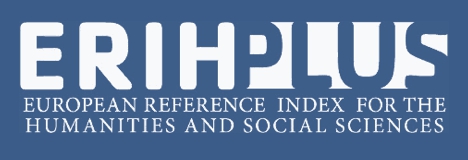PETROGRAPHIC, FLUID INCLUSION AND OXYGEN ISOTOPE CHARACTERISTICS OF RAMAND AREA, NW IRAN
Abstract
Ramand mineralization area is located at a distance of about 60 km from the provincial capital of Qazvin province, Iran. The studied area is a part of the Central Iran structural zone in the southern part of Danesfahan geological map. Lithological units in Ramand area are composed of riodacite, rhyolite, tuff riodacite, crystal tuff and riodacite. The presence of clay minerals indicates argillic alteration, which is a good indicator of mineralization. This type of alteration can be detected in volcanic regions which have been severely affected by argillic alteration. Silicification is the most important evidence of precious metal potential in post magmatic environments. According to mineralogical studies, sulfide minerals in the area consist of pyrite and chalcopyrite with supergene minerals such as covellite, malachite, and Fe hydroxides. Based on phase content, the three types of inclusion in Ramand area include vapor, vapor liquid, and liquid rich inclusions. According to fluid inclusion data, the liquid vapor homogenization temperature [TH (L–V)] varied from 73 to 307 °C, and salinity ranged from 1.75 to 4.74 wt% NaCl eq. The calculated δ18O values of water in equilibrium with quartz ranged from 5.8 to 6.9 per ml. Calculated δ18O values of water in equilibrium with calcite ranged from 4.4 to 9.4 per ml. These data suggest that the ores formed most likely originated from magmatic hydrothermal sources along with some meteoric solutions during mineralization processes.
References
BAZARGANI-GUILANI, K., PARCHEKANI, M, NEKOUVAGHT TAK, M. Mineralization in the Taroum mountains, View to Barik-Ab Pb-Zn (Cu) deposit, Western Central Alborz, Iran, WSEAS conferences, Cambridge, London, 2008.
BEANE, R., BODNAR, R. Hydrothermal fluids and hydrothermal alteration in porphyry copper deposits, Arizona Geological Society Digest, 1995.
BECHTEL, A., SUN, Y., PÜTTMANN, W., HOERNES, S., HOEFS, J. Isotopic evidence for multi-stage base metal enrichment in the Kupferschiefer from the Sangerhausen Basin, Germany. Chemical Geology, 176: 31-49, 2001.
BERBERIAN, F. Petrogenesis of Iranian plutons: a study of the Natanz and Bazman intrusive complexes, University of Cambridge, Cambridge, 1981.
BERBERIAN, M., KING, G. Towards a paleogeography and tectonic evolution of Iran. Canadian journal of earth sciences, 18: 210-265, 1981.
BLUNDELL, D., KARNKOWSKI, P., ALDERTON, D., OSZCZEPALSKI, S., KUCHA, H. Copper mineralization of the Polish Kupferschiefer: a proposed basement fault-fracture system of fluid flow. Economic Geology, 98:1487-1495, 2003.
BODNAR, R. J. Introduction to aqueous-electrolyte fluid inclusions. Fluid inclusions. Analysis and interpretation, 32: 81-100, 2003.
BROWN, P. E. A microcomputer program for the reduction and investigation of fluid-inclusion data. American Mineralogist, 74:1390-1393, 1989.
COOKE, D.R., HOLLINGS, P., WALSHE, J.L. Giant porphyry deposits: characteristics, distribution, and tectonic controls. Economic geology, 100: 801-818, 2005.
EZZATI, A., MEHRNIA, R., AJAYEBI, K. Detection of Hydrothermal potential zones using remote sensing satellite data in Ramand region, Qazvin Province, Iran. Journal of Tethys, 2: 93-100, 2014.
GUSTAFSON, L. B., HUNT, J. P. The porphyry copper deposit at El Salvador, Chile. Economic Geology, 70: 857-912, 1975.
MANSOURI, F. Petrology of Eocene volcanic rocks in the southwest of Danesfehan area. MSc Thesis, Tarbiat Moallem University of Tehran, Iran (in persian), 1998.
MCGOWAN, R.R., ROBERTS, S., BOYCE, A. J. Origin of the Nchanga copper–cobalt deposits of the Zambian Copperbelt. Mineralium Deposita, 40: 617-638, 2006.
MEHRNIA, S. R. Introducing the band M-ratio and its application in the diagnosis of hydrothermal alterations (case study: Ramand area in the southern province of Qazvin). 19 Congress of Iran Geology and 9th Geology National Conference of Payam Noor University, Iran (in Persian), 2015.
MUCHEZ, P., HEIJLEN, W., BANKS, D., BLUNDELL, D., BONI, M., GRANDIA, F. Extensional tectonics and the timing and formation of basin-hosted deposits in Europe. Ore Geology Reviews, 27: 241-267, 2005.
NIAZI, M., ASUDEH, I., BALLARD, G., JACKSON, J., KING, G., MCKENZIE, D. The depth of seismicity in the Kermanshah region of the Zagros Mountains (Iran). Earth and Planetary Science Letters, 40:270-274, 1978.
SEEDORF, E. Porphyry deposits: Characteristics and origin of hypogene features. Economic Geology, 100: 251-298, 2005.
SHEPHERD, T.J., RANKIN, A.H., ALDERTON, D.H. A practical guide to fluid inclusion studies. Blackie Academic & Professional, New York, 1985.

This work is licensed under a Creative Commons Attribution-NonCommercial 4.0 International License.
Policy Proposal for Free Access Journals
Authors who publish in this journal agree to the following terms:
a. Authors retain the copyright and grant the journal the right of first publication, with the work simultaneously licensed under the Creative Commons Attribution License which allows the sharing of the work with acknowledgment of the authorship of the work and initial publication in this journal.
b. Authors are authorized to take additional contracts separately, for non-exclusive distribution of the version of the work published in this journal (eg publish in institutional repository or as a book chapter), with acknowledgment of authorship and initial publication in this journal.
c. Authors are allowed and encouraged to publish and distribute their work online (eg in institutional repositories or on their personal page) at any point before or during the editorial process, as this can generate productive changes, as well as increase the impact and The citation of published work (See The Effect of Free Access).





















